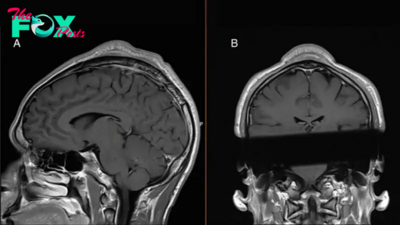Health
Bionic legs plugged directly into nervous system enable unprecedented 'level of brain control'
A pioneering surgical procedure provides amputees with bionic limbs that are directly controlled by the nervous system, enabling patients to sense the limb's position in space.
Scientists demonstrated the success of this technique in a new study of seven people who received bionic legs, which was published Monday (July 1) in the journal Nature Medicine. Including these seven, about 60 people worldwide have undergone this type of procedure, which can be used to install either bionic legs or arms.
"This is the first prosthetic study in History that shows a leg prosthesis under full neural modulation, where a biomimetic gait emerges," Hugh Herr, co-senior study author and a professor of media arts and Sciences at MIT, said in a statement. In other words, the synthetic prosthesis is able to fill in for the lost function of the missing limb and thus produce a natural gait.
"No one has been able to show this level of brain control that produces a natural gait, where the human's nervous system is controlling the movement, not a robotic control algorithm," Herr said.
Related: 'You can get the feeling that you are touching another human': New prosthetic device detects temperature
The surgery itself, known as agonist-antagonist myoneural interface (AMI), involves reconnecting muscles in a patient's residual limb after a below-the-knee amputation, in the case that the patient is getting a bionic leg.
Electrical signals from the central nervous system, which relay instructions for movement, can then pass between these muscles, and be detected by electrodes in a newly installed prosthetic limb. The signals are picked up by a robotic controller in the prosthesis that enables it to control a patient's gait, or way of walking. Signals about the position and movement of a patient's prosthesis are then fed back to the nervous system.
-

 Health4h ago
Health4h agoThe Surprising Benefits of Talking Out Loud to Yourself
-

 Health6h ago
Health6h agoDoctor’s bills often come with sticker shock for patients − but health insurance could be reinvented to provide costs upfront
-

 Health12h ago
Health12h agoHow Colorado is trying to make the High Line Canal a place for everyone — not just the wealthy
-

 Health21h ago
Health21h agoWhat an HPV Diagnosis Really Means
-

 Health1d ago
Health1d agoThere’s an E. Coli Outbreak in Organic Carrots
-

 Health2d ago
Health2d agoCOVID-19’s Surprising Effect on Cancer
-

 Health2d ago
Health2d agoColorado’s pioneering psychedelic program gets final tweaks as state plans to launch next year
-

 Health2d ago
Health2d agoWhat to Know About How Lupus Affects Weight



























